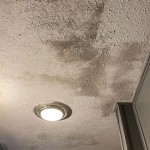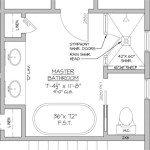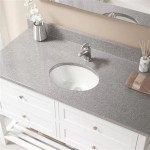Bathroom Exhaust Fan Code Requirements in Florida
Bathroom exhaust fans are essential components of residential and commercial structures in Florida. They play a crucial role in maintaining indoor air quality, preventing moisture buildup, and mitigating the growth of mold and mildew. Consequently, Florida Building Codes (FBC) establish specific requirements for the installation and operation of these fans to ensure the health, safety, and well-being of building occupants and the structural integrity of the buildings themselves. This article aims to elucidate the key provisions of the Florida Building Code pertaining to bathroom exhaust fans.
The Florida Building Code adopts the International Building Code (IBC) and the International Residential Code (IRC) with Florida-specific amendments. These codes provide a comprehensive framework for regulating building construction and maintenance, including plumbing, mechanical, electrical, and ventilation systems. Therefore, understanding the relevant sections within these codes is critical for architects, contractors, building inspectors, and homeowners involved in designing, installing, or renovating bathrooms in Florida.
Failure to comply with the provisions outlined in the Florida Building Code can result in penalties, project delays, and forced remediation. Adhering to these regulations not only ensures compliance with the law but also contributes to the creation of healthier and more durable living spaces. This article will delve into the specific requirements concerning ventilation rates, fan placement, ductwork specifications, and other crucial aspects of bathroom exhaust fan systems.
Minimum Ventilation Rates
One of the primary purposes of bathroom exhaust fans is to remove moisture generated during showering, bathing, and other bathroom activities. Excessive moisture can lead to the growth of mold and mildew, which can cause health problems and damage building materials. To address this issue, the Florida Building Code mandates minimum ventilation rates for bathrooms. These rates are typically expressed in cubic feet per minute (CFM) and are determined based on the size of the bathroom or the frequency of occupancy.
The International Residential Code (IRC), specifically Section M1507, addresses local exhaust fans. It stipulates that bathroom exhaust fans must be capable of exhausting air at a minimum rate of either 50 CFM for intermittent operation or 20 CFM for continuous operation. Intermittent operation refers to a fan that is turned on and off as needed, while continuous operation indicates a fan that runs constantly, typically at a lower speed. The IRC also notes that the exhaust fan needs to be tested in accordance with the requirements of AMCA Standard 210 or HVI Standard 916. These standards set the procedures to measure the airflow rate of the fan.
The International Building Code (IBC) addresses ventilation in Section 1203.4. Though the IBC focuses more on larger commercial or multi-family buildings, it states that in dwelling units, bathrooms and toilet rooms must have ventilation in accordance with the IRC. Therefore, in many cases, the IRC ventilation requirements as outlined above apply within a commercial setting.
The code specifies the required airflow rate, or CFM, based on the bathroom's size. For bathrooms larger than the dimensions assumed within the code, a calculation based on room volume may be necessary to determine the adequate CFM. Calculating the volume requires multiplying the length, width, and height of the bathroom. This calculation helps ensure that the exhaust fan capacity is appropriate for the overall size of the space.
It's important to note that these are minimum requirements. In some situations, a higher ventilation rate may be necessary to adequately remove moisture, especially in bathrooms with high usage or those located in areas with high humidity. Local amendments in various municipalities within Florida may also specify different ventilation standards or more stringent regulations.
Furthermore, the effectiveness of the exhaust fan is directly related to its proper installation and maintenance. Airflow rates can be significantly reduced by obstructions in the ductwork, improperly sized ductwork, or a poorly maintained fan motor. Regular cleaning and inspection are essential to ensure that the fan continues to operate at its designed capacity.
Ductwork and Termination
The effectiveness of a bathroom exhaust fan relies heavily on properly designed and installed ductwork. The ductwork carries the moisture-laden air from the bathroom to the outside, and any deficiencies in the duct system can compromise the fan’s performance and potentially lead to condensation problems within the ductwork itself.
The Florida Building Code requires that exhaust ductwork be constructed of smooth, non-combustible materials, such as galvanized steel or aluminum. Flexible ductwork is permitted under certain conditions, but it should be kept to a minimum length and should be properly supported to prevent sagging. Sagging ductwork can trap moisture and restrict airflow. Further to that, flexible duct needs to be listed and labeled within the standard UL 181. When using flexible ductwork, it is important to ensure that it meets the flame-spread and smoke-developed index requirements as outlined within the code.
The diameter of the ductwork is also critical. The code typically requires a minimum duct diameter of 4 inches for most bathroom exhaust fans. However, the specific duct size may need to be increased depending on the length of the duct run and the airflow rate of the fan. Longer duct runs require larger diameters to minimize friction and ensure adequate airflow. Duct size is determined based on the manufacturer's specification for the fan. Using undersized ductwork can significantly reduce the fan's efficiency and may void the manufacturer's warranty.
Proper termination of the exhaust duct is equally important. The exhaust duct must terminate outside the building, away from windows, doors, and other openings. The exhaust should be directed away from walkways or other areas where people may be exposed to the moist air. The termination point should also be equipped with a backdraft damper to prevent outside air from entering the ductwork when the fan is not in operation. These dampers help to prevent energy loss and ensure that the fan functions correctly when needed.
The exhaust termination point must also comply with minimum distance separation requirements from other building elements. For example, the code may specify that the exhaust outlet must be at least 3 feet away from any operable windows or doors to prevent the re-entry of moist air into the building. It is also important to ensure that the exhaust outlet is properly screened to prevent the entry of insects or rodents.
Additionally, the ductwork should be insulated to prevent condensation, particularly in unconditioned spaces such as attics. Insulation helps to maintain the temperature of the air inside the duct and prevents moisture from condensing on the duct walls. Condensation inside the ductwork can lead to mold growth and reduce the fan's efficiency.
Electrical Requirements and Installation
The electrical installation of bathroom exhaust fans must comply with the Florida Building Code, which adopts the National Electrical Code (NEC). This ensures the safe and reliable operation of the fan and protects against electrical hazards.
The NEC requires that all electrical work be performed by a qualified and licensed electrician. This includes wiring the fan, connecting it to the electrical panel, and ensuring that all connections are properly grounded. The electrician must also ensure that the fan is properly sized for the electrical circuit and that the circuit is protected by a ground fault circuit interrupter (GFCI) outlet in bathrooms, as required by the code. GFCI outlets are designed to protect against electrical shock in wet environments.
The wiring for the exhaust fan must be of the appropriate gauge for the circuit’s amperage. Undersized wiring can overheat and create a fire hazard. The wiring must also be properly protected and secured to prevent damage. In addition, the exhaust fan must be properly grounded to prevent electrical shock. This is typically accomplished by connecting a grounding wire from the fan to a grounded electrical box.
The fan's installation must also adhere to the manufacturer's instructions. The manufacturer provides specific guidelines for mounting the fan, connecting the ductwork, and wiring the electrical connections. Following these instructions is essential to ensure that the fan operates correctly and safely. Altering the fan's design or deviating from the manufacturer's instructions can void the warranty and create a safety hazard.
The location of the exhaust fan is also important. The fan should be located as close as possible to the primary source of moisture, such as the shower or bathtub. This helps to capture the moisture before it can spread throughout the bathroom. The fan should also be mounted in a location where it can easily draw air from the entire room. Generally, centrally located fans will provide better overall ventilation than fans mounted in a corner.
Finally, the fan should be equipped with a backdraft damper to prevent outside air from entering the bathroom when the fan is not in operation. This helps to prevent energy loss and ensures that the bathroom remains comfortable. The backdraft damper should be inspected periodically to ensure that it is functioning correctly.
Adhering to these electrical and installation requirements is essential to ensure the safe and effective operation of bathroom exhaust fans in Florida. Proper installation not only protects against electrical hazards but also ensures that the fan operates efficiently and provides adequate ventilation for the bathroom.
The Florida Building Code aims to ensure the health and safety of building occupants by establishing minimum standards for building construction and maintenance. Understanding and complying with the specific requirements for bathroom exhaust fans is essential for all stakeholders involved in the building process. This proactive approach contributes to creating healthier, safer, and more durable living spaces in Florida.

2024 Florida Building Code Residential 7th Edition Icc Digital Codes

What Is The Code For Bathroom Ventilation

Chapter 24 Fuel Gas 2024 Fbc Residential 5th Edition Upcodes
Bathroom Fan Vent Talk Of The Villages Florida

Chapter 3 Building Planning 2024 Fbc Residential 7th Edition Upcodes

Can A Bathroom Fan Vent Into The Attic Code Explained Building Trainer

Homeowner Guide To Bathroom Exhaust Fans

Exhaust Fan Installation In Tampa St Petersburg Fl

2024 Florida Building Code Energy Conservation 7th Edition Icc Digital Codes

Broan Nutone 70 Cfm Through Wall Utility Exhaust Fan For Garage Kitchen Laundry And Rec Cooms 512m The Home Depot
Related Posts







